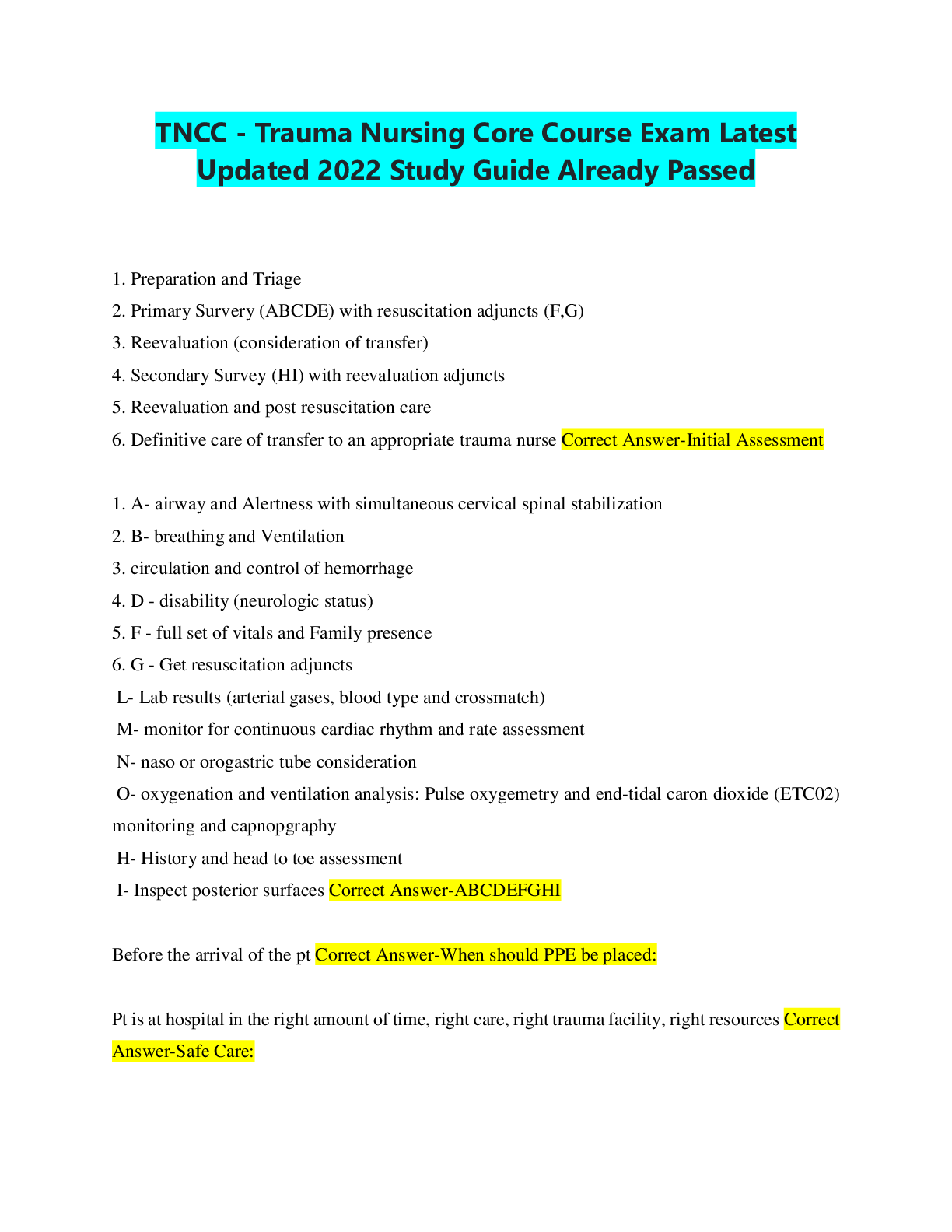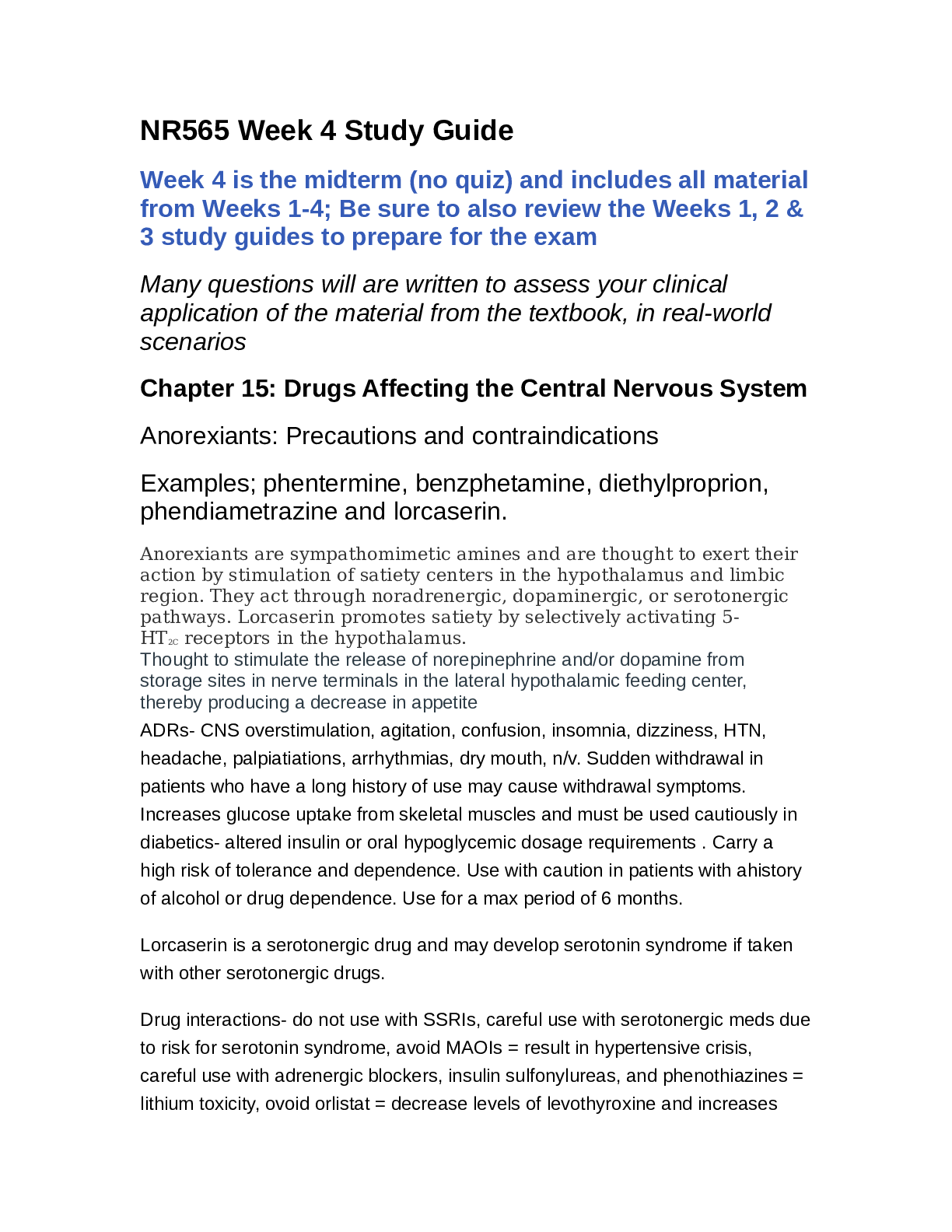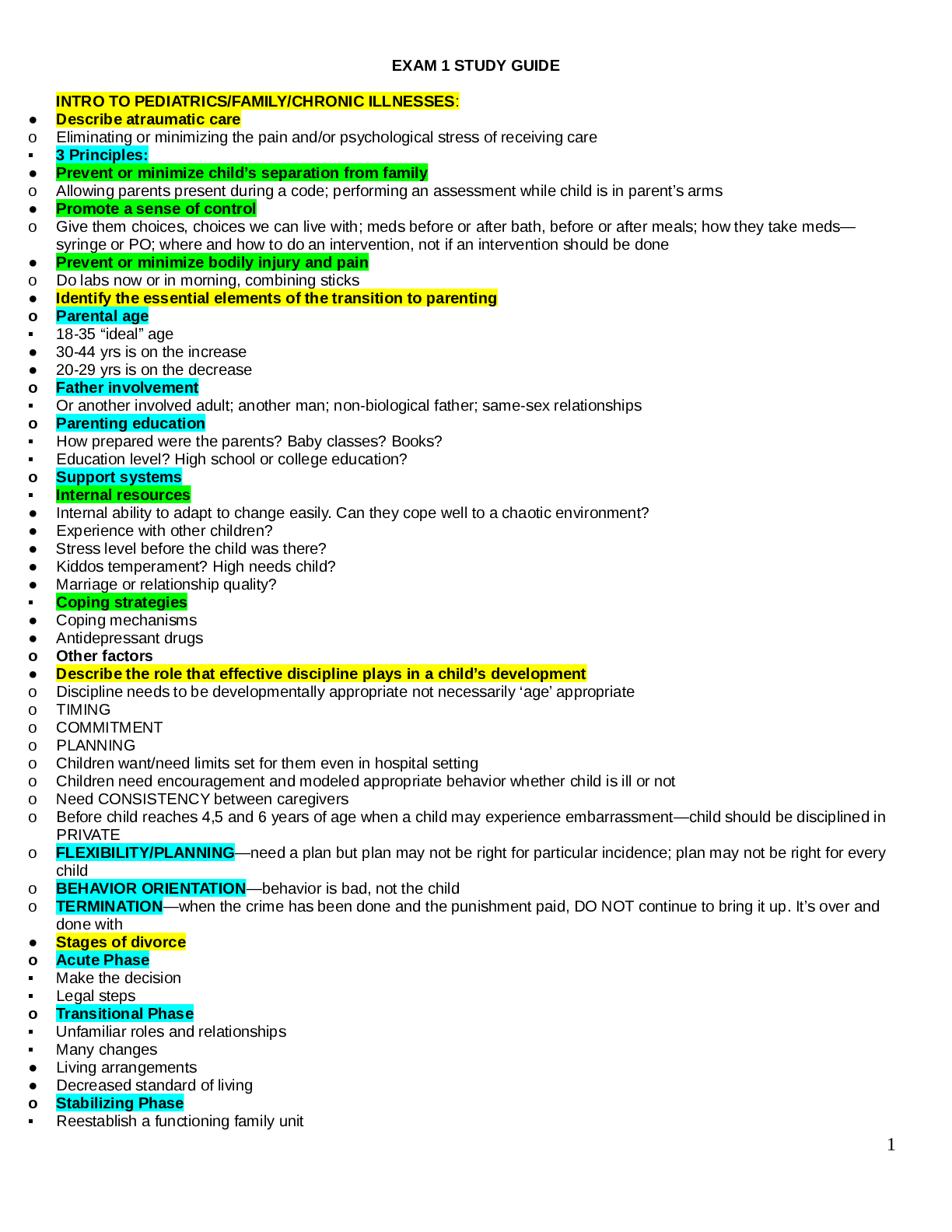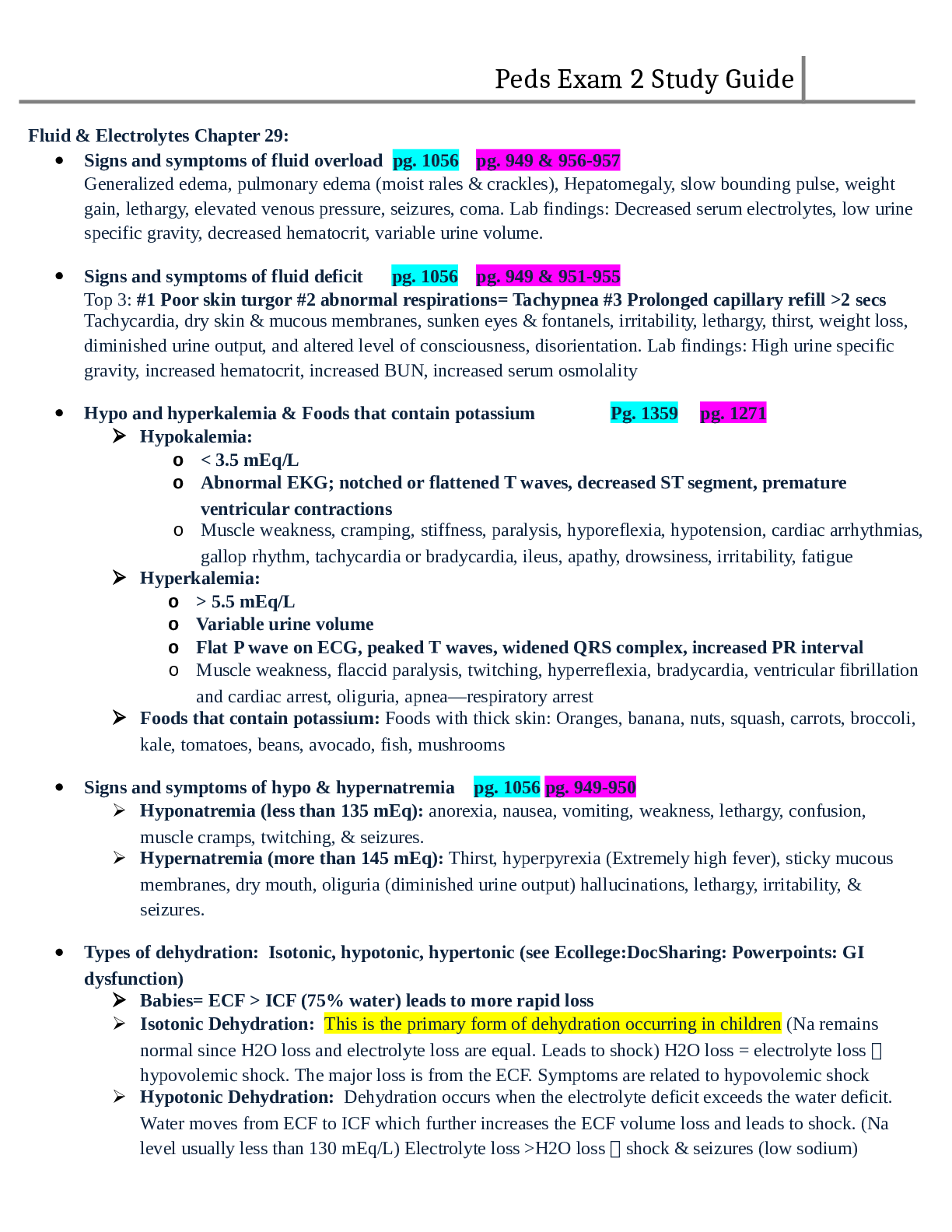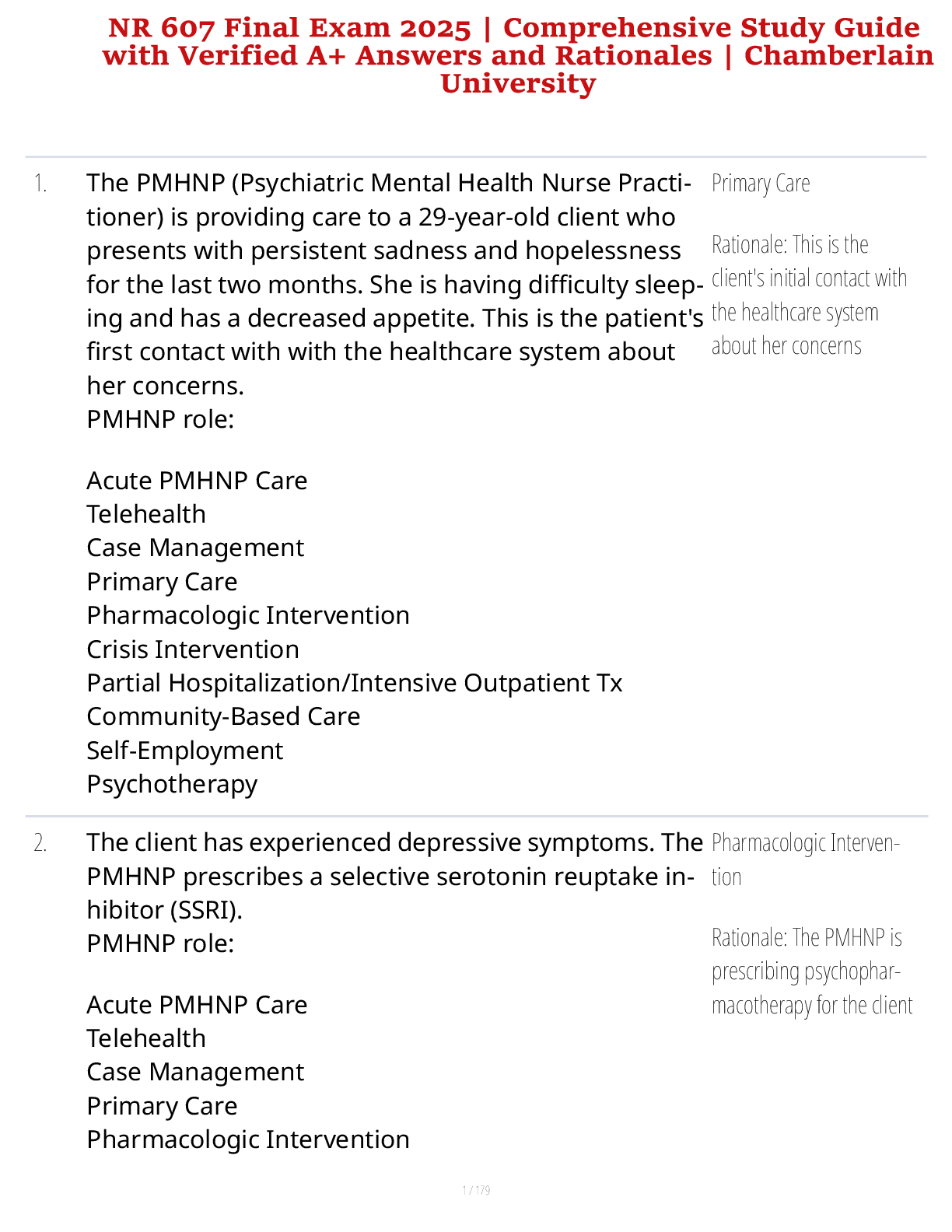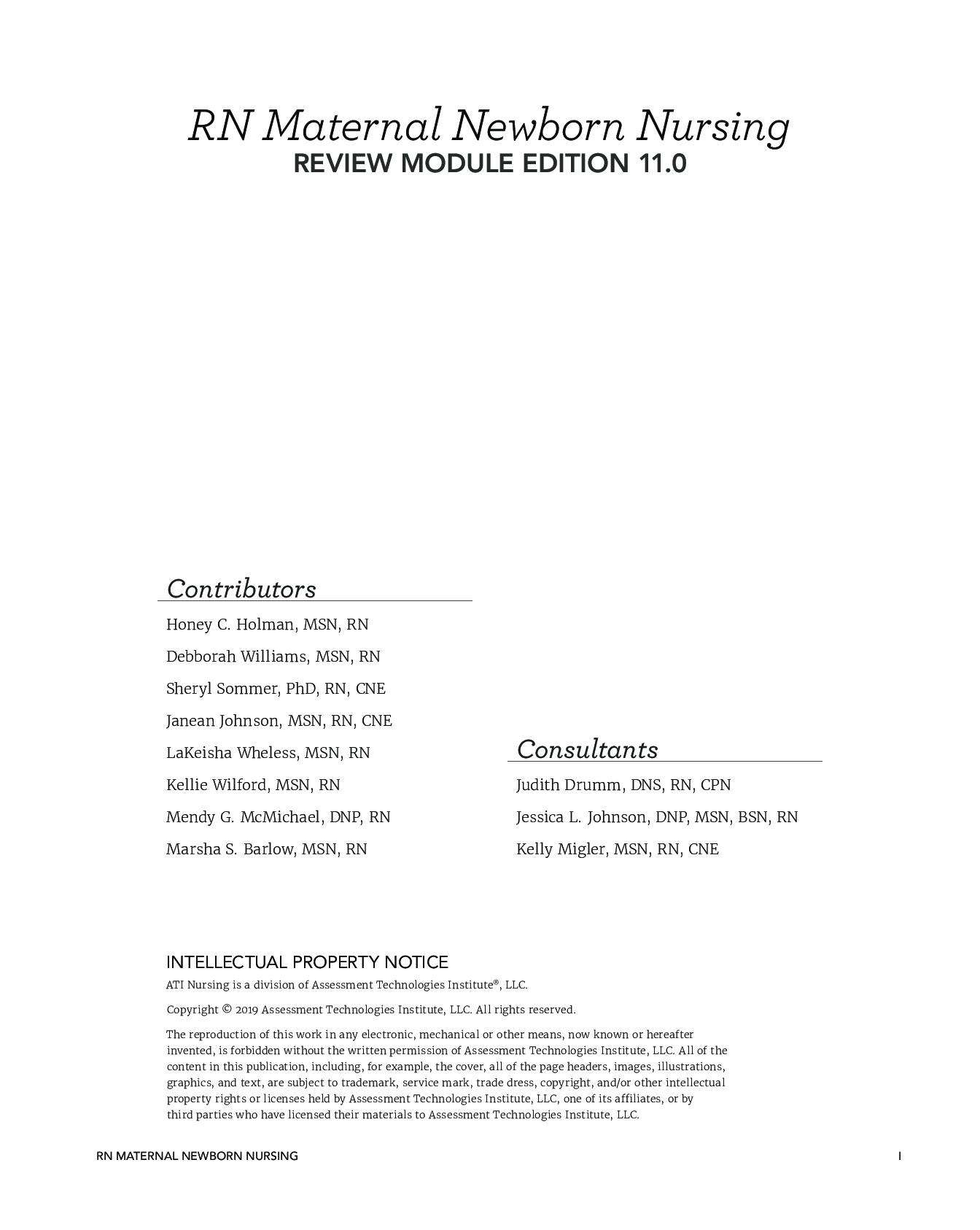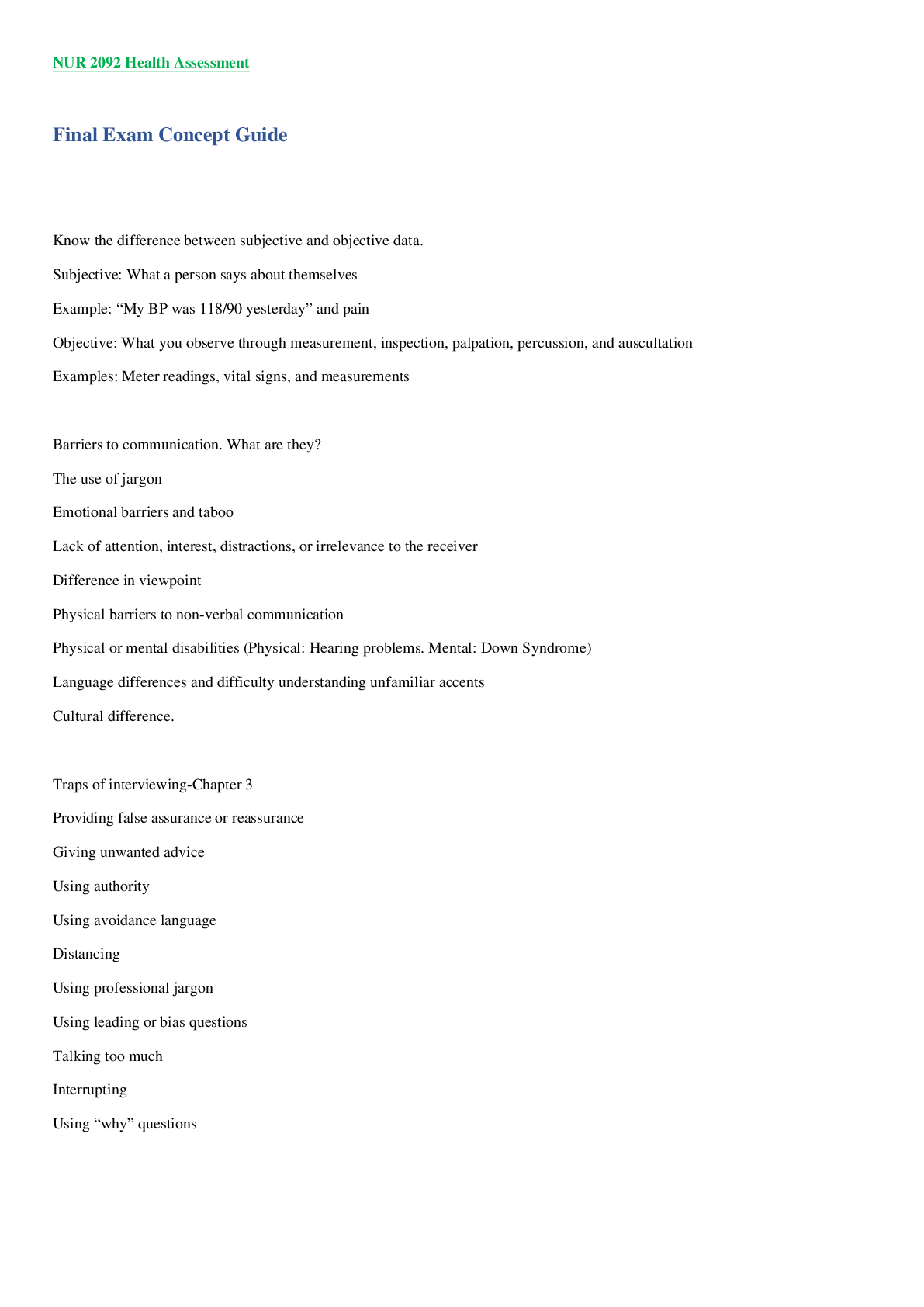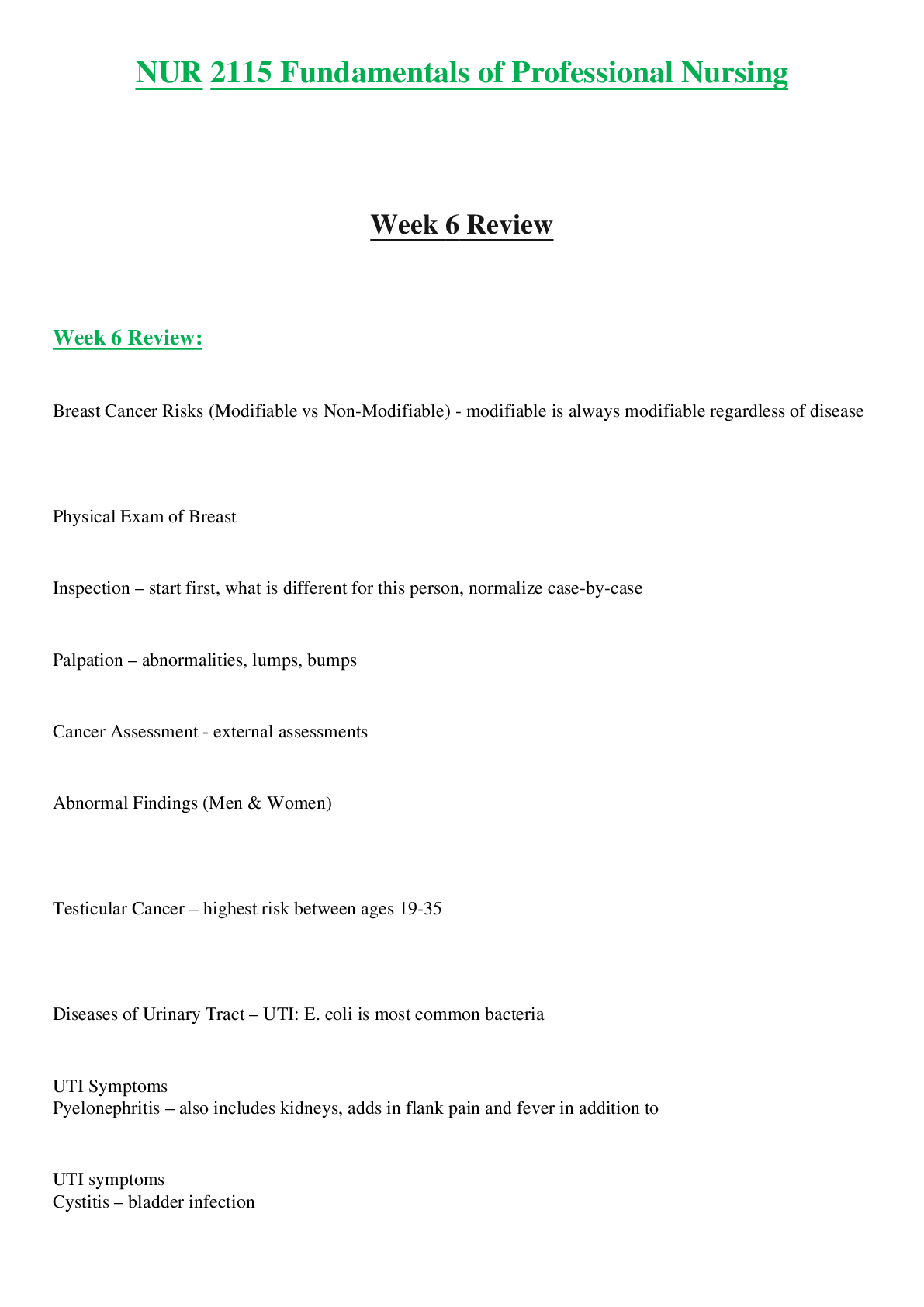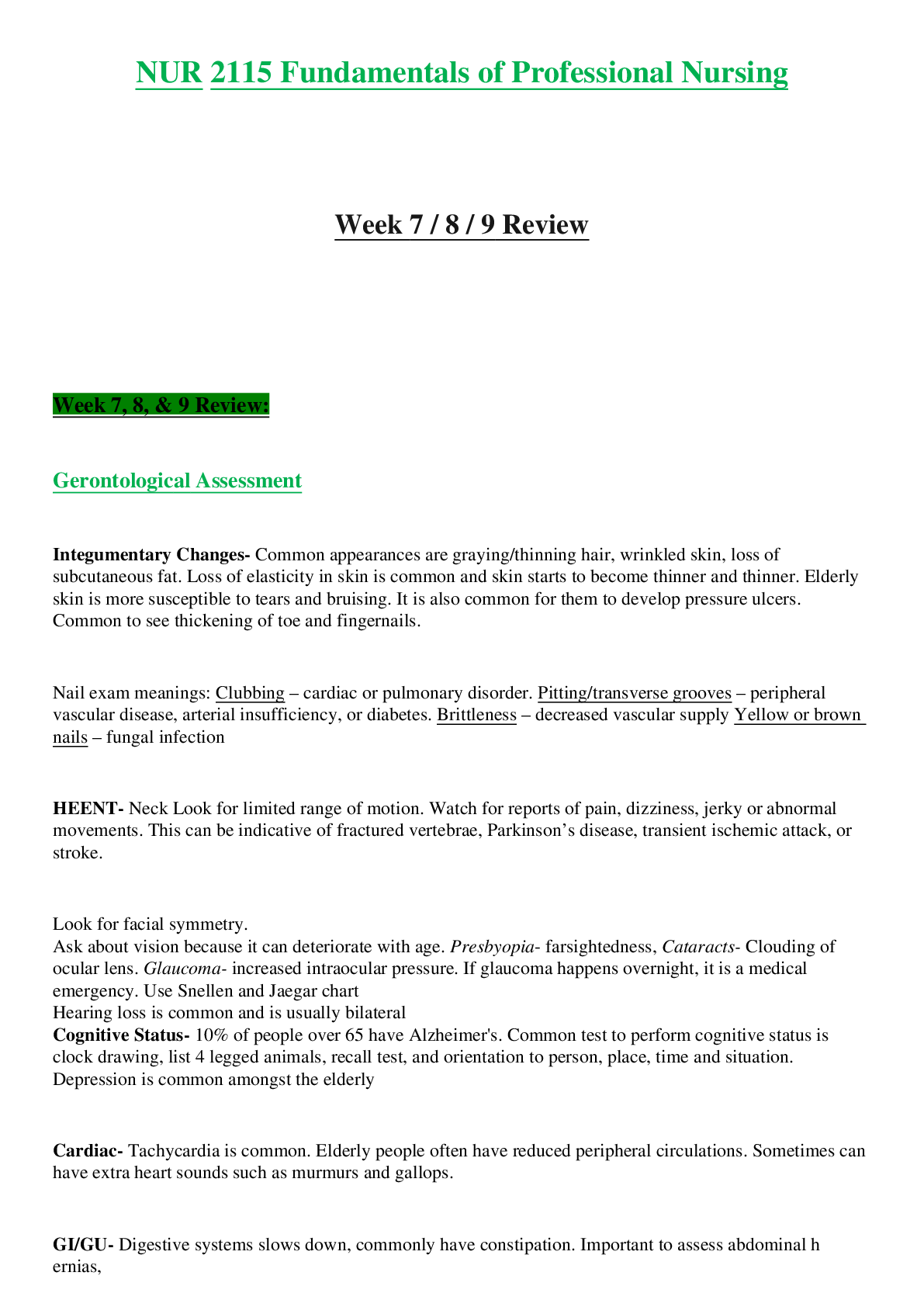*NURSING > STUDY GUIDE > NR 565/NR565 WEEK 7 & 8 FINAL EXAM STUDY GUIDE, CHAMBERLAIN(latest) (All)
NR 565/NR565 WEEK 7 & 8 FINAL EXAM STUDY GUIDE, CHAMBERLAIN(latest)
Document Content and Description Below
NR 565 Exam Final Study Guide Antacids: weak bases that react with hydrochloric acid to form salt & water. o Used in the treatment of Hyperacidity, GERD, PUD, hyperphosphatemia, and calcium defi ... ciency o Contain combinations of metallic cation (aluminum, calcium, magnesium, and sodium) and basic anion (hydroxide, bicarbonate, carbonate, citrate, and trisilicate) Pharmacodynamics, Pharmacokinetics, Pharmacotherapeutics o Neutralize Gastric Acidity (causes ^pH of the stomach and duodenal bulb) o Inhibit proteolytic activity of pepsin o Increase lower esophageal sphincter tone o Acid-neutralizing capacity ANC varies between products expressed in mEqs o If ingested in a fasting state, antacids reduce acidity for approximately 20 to 40 minutes o If taken 1 hr after a meal, acidity is reduced for 2 to 3 hrs o A second dose taken after a meal maintains reduced acidity for more than 4 hrs after the meal o The action of antacids occurs locally in the GI tract with minimal absorption, minimal metabolism o ALL antacids are contraindicated in the presence of severe abdominal pain of unknown cause, especially if accompanied by fever -HIGH SODIUM content: pts w/ HTN, CHF, marked renal failure, or on low-sodium diets need to use low sodium preparation -Concurrent administration with enteric-coated drugs, destroys the coating= alters absorption, ^ the risk for adverse effects -Administrations should be separated by at least 2 hours to decrease drug/drug interactions 1. Calcium based antacids: TUMS, Caltrate, Calcarb Prescribed to treat calcium deficient states, i.e. chronic renal failure, post-menopause, and osteoporosis Used to bind phosphates in CRF Require Vitamin D for absorption from the GI tract Excreted mainly in feces, 20% in urine ADR: Contraindicated in the presence of hypercalcemia and renal calculi Can cause constipation- increase bulk, fluids and mobility, stool softener Administered 30min- 1hr on empty stomach or 3hr after meals Should not be administered with food containing large amounts of oxalic acid (spinach, rhubarb), or phytic acid (bran, cereals), they decrease the absorption of calcium Taking w/ foods containing phosphorus (milk, dairy) can lead to milk-alkali syndrome (N/V, confusion, headache). Taking with acidic fruit juice improve absorption 2. Aluminum based: AlternaGEL, Amphojel, Mylanta Inhibit smooth muscle contraction and slow gastric emptying Used to bind phosphates in CRF Not absorbable with routine use Aluminum concentrated in the CNS Bind with phosphate and excreted in feces Prolonged use in patients with renal failure may result in dialysis osteomalacia o Aluminum deposits in bone and osteomalacia occurs Elevated aluminum tissue levels contribute to the development of dialysis encephalopathy Used to treat hyperphosphatemia in pts w/ renal failure & phosphate renal stone prevention Can cause constipation- increase bulk, fluids and mobility, stool softener Aluminum is not easily removed by dialysis b/c it is bound to albumin & transferrin = do not cross dialysis membrane 3. Magnesium based: Milk of mag, Maalox, Mylanta Can be used to treat magnesium deficiencies from malnutrition, alcoholism, or mag-depleting drugs Contraindicated in patients with renal failure & used with caution in pts with renal insufficiency Not absorbable with routine use Excreted in the urine Contraindicated in patients with renal failure, use with caution for patients with any degree of renal insufficiency o Malfunctioning kidney is unable to excrete magnesium and hypermagnesemia may result Can cause diarrhea- increase fiber intake (Alkalosis may occur in renal impairment) Clinical Use and Dosing The malfunctioning kidney cannot excrete magnesium= hypermagnesemia may result Rational drug selection o ANC, sodium content, and cost o Combination products with aluminum hydroxide and magnesium hydroxide have the highest ANC (use is moderate to severe disease Monitoring o Serum phosphate, potassium, and calcium during chronic use o These drugs may cause increased serum calcium and decreased serum phosphate o Chronic magnesium hydroxide use may cause elevated Mg levels in patients with renal failure or the elderly with decreased renal function Patient education o Take as prescribed, especially related to mealtimes o Take 1-3 hrs after meals and at bedtime o Chewable tablets chew thoroughly and drink half a glass of water o Shake suspensions before administration o Many drug interactions, separate doses by 2 hou [Show More]
Last updated: 3 years ago
Preview 1 out of 37 pages

Buy this document to get the full access instantly
Instant Download Access after purchase
Buy NowInstant download
We Accept:

Reviews( 0 )
$11.00
Can't find what you want? Try our AI powered Search
Document information
Connected school, study & course
About the document
Uploaded On
Jun 03, 2022
Number of pages
37
Written in
All
Additional information
This document has been written for:
Uploaded
Jun 03, 2022
Downloads
0
Views
133








